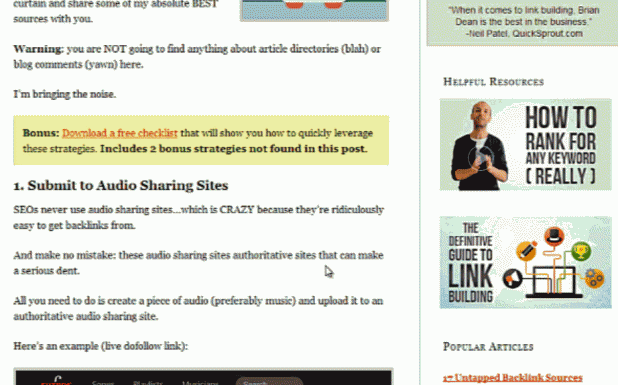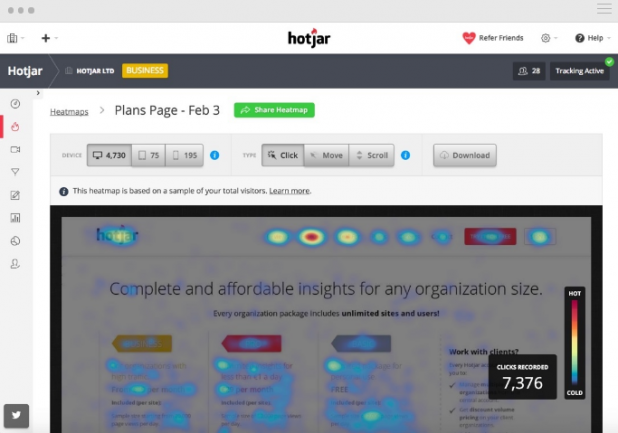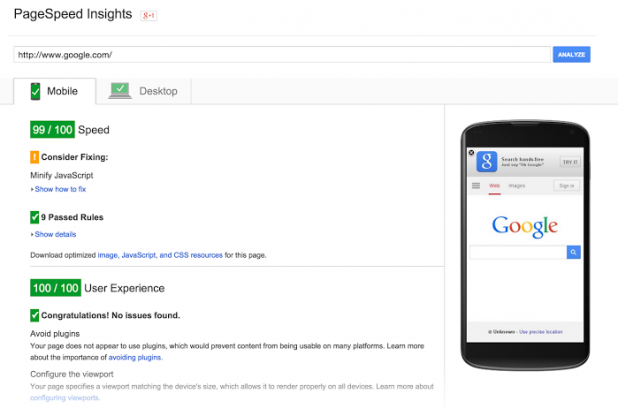When it comes to our websites, there’s always a nagging feeling that we could be doing more, right?
More traffic. More leads. More conversions.
Many marketers make the mistake of sitting on their hands and hoping that their on-site performance improves over time. Unfortunately, building up your Web presence today represents an active process of optimization rather than a passive one.
Luckily, there is a wealth of tools and strategies out there for marketers looking to improve the quality of their leads, drive more traffic and make their sites more accessible to visitors.
If you feel your current site is lacking or has room for improvement in terms of traffic or conversions, perhaps it’s time to consider some new strategies to transform your underperforming site into a well-oiled machine.
1. From Cold Traffic to Hot Leads
No matter how much traffic you’re currently driving to your site, the fact remains that it means to very little unless you’re turning your visitors into long-time subscribers.
Keep in mind that 96 percent of visitors to any given site are not ready to buy. Meanwhile, many of those same visitors will not return to your site again unless they become part of your list.
Rather than give your traffic the chance to bounce, capturing as many leads as possible via well-crafted calls-to-action and opt-in forms should be a top priority. That’s exactly why e-mail marketing is so important to modern marketers, boasting the highest ROI of any type of digital campaign.
Turning your traffic into subscribers requires a smart lead generation system. Platforms such as OptInMonster provide marketers with the ability to capture leads via high-converting opt-in forms and timely pop-ups.
Although such tactics may seem intrusive on the surface, it’s noted that sites implementing a two-step opt-in process for their lists boost conversions by a staggering 785 percent.
Again, simply having an e-mail list isn’t enough. Marketers must craft sites centered around lead generation versus assuming that subscribers and customers will fall into their laps.
2. Optimizing Your On-Site Content
If you’ve heard rumblings that “SEO is dead,” think again.
Although trying to optimize your on-site content too much can be a kiss of death, ignoring the essentials of SEO will inevitably sabotage your site’s performance.
You don’t need to be a SEO guru to tick the boxes of effective on-site content, though.
If you’re running your site on WordPress, plug-ins such as Yoast SEO can tell you if your on-site content is optimized for humans and search engines in an instant.
While you don’t necessarily need do everything on Yoast’s checklist or sacrifice readability for search potential, these points will steer your content in the right direction. Yoast is especially handy for optimizing overlooked aspects of your content such as H1 tags and meta descriptions.
Marketers can also take advantage of free tools such as Neil Patel’s SEO Analyzer to see what’s ailing their low-performing pages.
In short, these tools can help plug the holes in your on-site content to make sure that you’re not needlessly sacrificing your search performance.
3. Making the Most of Mobile Traffic
Did you know that mobile traffic has surpassed traffic from traditional desktops?
It’s apparent that Google favors sites that are mobile-friendly as searching on-the-go becomes more and more common. Additionally, people are looking toward mobile-specific apps to keep businesses closer to their pockets. Literally.
LinkTexting is a shining example of how businesses with mobile apps can reach customers beyond the confines of an app store. Providing download links to visitors via text adds an extra layer of flexibility for sites boasting mobile apps for their users.
However, appealing to mobile traffic is more than possible even if you don’t have an app.
For example, consider the benefits of responsible design that looks good across all devices versus only a desktop. Responsive sites are often scroll-friendly and use large call-to-action buttons that are easy for visitors to tap on-the-go.
Mobile usability isn’t an option anymore: it’s an expectation of Google.
In other words, shutting out mobile visitors not only hurts your conversion rate but could also hurt your ability to rank via search.
4. Understanding Your Traffic by the Numbers
Google Analytics represents the go-to platform for marketers looking to understand the behavior of their traffic and leads.
That said, more robust tools such as heatmapping software allows marketers to visualize the actions of their traffic in real-time.
Platforms like Hotjar manage to break down everything from clicks, taps and scrolls on-site as they happen, painting a picture of how each and every one of your visitors gets from Point A to Point B.
Cool, right?
Beyond providing a more in-depth look at your traffic and leads, heatmapping provides a concrete map of where your visitors are engaging and where they’re dropping off. As such, marketers can move around their calls-to-action and most important links accordingly to ensure that their crucial content isn’t going unseen.
5. Encourage More Social Subscribers
As noted earlier, many of your initial visitors will drop off if they don’t become long-term subscribers.
If you’re unable to score the email address of any given lead, consider how turning your traffic into social followers is a solid secondary option.
Although e-mail leads are certainly more qualified, it doesn’t hurt to beef up your social numbers, does it? As your social followers warm up to you over time, they become more likely to eventually become customers.
Encouraging more followers on-site is a straightforward process that won’t interrupt your content or user experience. For example, social sharing buttons from AddThis naturally fit in with just about any site design to encourage one-click social sharing.
Also check out how WordPress plug-ins such as Click To Tweet can seamlessly turn the best parts of your content directly into tweets.
Funneling traffic into your social feeds is always a nice bonus. Rather than slave away trying to boost your followers on Facebook and Twitter, these types of plugins do the heavy lifting on your behalf.
6. Pay Closer Attention to User Experience
Last but not least, don’t overlook the power of UX in regard to your website.
The concept of user experience is so much more than a buzzphrase for today’s marketers. Optimizing your on-site UX can help decrease your bounce rate and increase the likelihood of click-throughs and conversions.
Given that 47 percent of visitors will leave a site that doesn’t load in seconds, marketers need to find the balance between a speedy site and the functionalities they need. Tools like Google’s PageSpeed Insights can clue you in on whether or not your site is too bulky or has room for speed improvements.
Effective UX comes from a combination of all the previous tips. When you create a site that’s built to convert while also running as efficiently as possible, results will come accordingly.
What Do You Think Your Site Might Be Missing?
Making the most of your website means optimizing it from top to bottom. Some of these tips are easy to overlook; however, you might be surprised at how much they could transform your site if you give them a shot.












